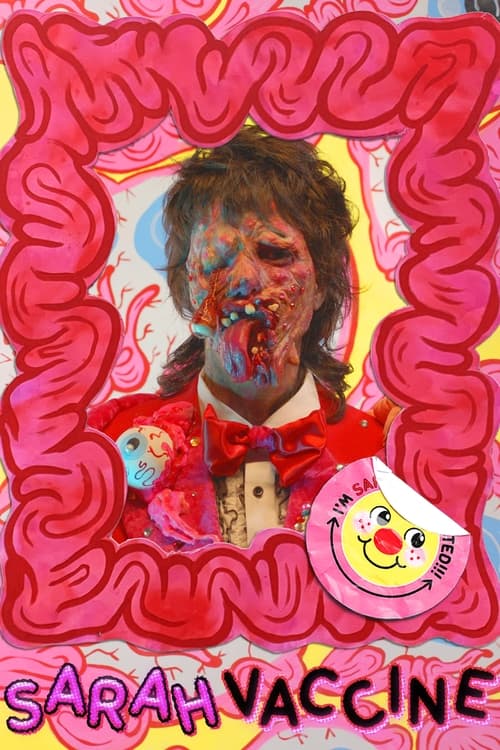
Ask Your Own Question
What is the plot?
What is the ending?
In the ending of "The Sarah Vaccine," Sarah, the protagonist, confronts the ethical dilemmas surrounding the vaccine she developed. After a tense standoff with government officials and pharmaceutical companies, she decides to release the vaccine to the public, prioritizing the health of the community over profit. The film concludes with Sarah watching as people receive the vaccine, hopeful for a better future.
As the final act unfolds, the scene opens in a dimly lit conference room where Sarah sits at a long table, flanked by government officials and representatives from pharmaceutical companies. The atmosphere is thick with tension; the stakes are high. Sarah's face reflects a mix of determination and anxiety as she presents her findings on the vaccine she has developed. She passionately argues for its immediate release, emphasizing the lives that could be saved. The officials, however, are more concerned with the financial implications and potential liabilities, leading to a heated debate.
Cut to Sarah's lab, where she is seen working late into the night, surrounded by vials and research papers. The camera captures her exhaustion, but also her unwavering resolve. She recalls moments from her past--her initial inspiration to create the vaccine, the faces of those who have suffered from the disease, and her late father, a scientist who instilled in her the importance of ethics in science. This internal reflection fuels her determination to do what is right.
The scene shifts back to the conference room, where Sarah, feeling cornered, makes a bold decision. She stands up, her voice steady but filled with emotion, and declares that she will release the vaccine to the public, regardless of the consequences. The officials are taken aback, and a heated argument ensues. Sarah's passion ignites a spark in her colleagues, who begin to rally behind her, echoing her sentiments about the moral obligation to save lives.
In the following scene, we see Sarah in a public health facility, where she is overseeing the first vaccinations. The atmosphere is charged with hope and anxiety as people line up, some skeptical, others eager. Sarah moves through the crowd, offering words of encouragement, her face a mixture of pride and fear. She locks eyes with a young mother holding her child, and in that moment, the weight of her decision becomes palpable. The camera lingers on Sarah's expression, capturing her vulnerability and the gravity of her choice.
As the vaccinations begin, the film intercuts between the facility and the reactions of various characters. We see the government officials grappling with the fallout of Sarah's decision, some supportive, others furious. The pharmaceutical representatives are shown scrambling to contain the situation, realizing they have underestimated Sarah's resolve.
The final scenes depict a montage of people receiving the vaccine, smiles breaking through the initial tension. Sarah watches from a distance, her heart swelling with hope as she sees the community coming together. The camera pans out, showing a diverse group of individuals united in their fight against the disease, symbolizing the power of collective action.
In the closing moments, Sarah receives a call from her late father's old colleague, who expresses pride in her work and reassures her that she made the right choice. The film ends with Sarah standing outside the facility, looking up at the sky, a sense of peace washing over her as she realizes that she has chosen humanity over profit.
In terms of character fates, Sarah emerges as a hero, having made a significant impact on public health. The government officials are left to navigate the consequences of their decisions, some facing backlash while others begin to reconsider their priorities. The pharmaceutical representatives are left scrambling, their plans disrupted by Sarah's courageous act. The community, now vaccinated, stands united, hopeful for a healthier future, embodying the film's message about the importance of ethical responsibility in science and the power of individual action.
Is there a post-credit scene?
In "The Sarah Vaccine," there is indeed a post-credit scene that adds an intriguing layer to the film's narrative. After the credits roll, the screen fades back in to reveal a dimly lit laboratory. The camera pans across various scientific equipment and vials, hinting at ongoing research.
In the center of the room, a scientist, Dr. Emily Carter, is seen meticulously examining a sample under a microscope. Her brow is furrowed with concentration, and there's a palpable tension in the air. As she adjusts the focus, her expression shifts from curiosity to shock.
Suddenly, her phone buzzes on the table, breaking her concentration. She glances at the screen, revealing a message from an unknown number: "We need to talk about Sarah." The urgency in her eyes suggests that there are deeper implications to the vaccine and its effects that have yet to be uncovered.
The scene ends with Dr. Carter looking up, a mix of determination and fear etched on her face, as she prepares to delve into a mystery that could change everything. This moment leaves the audience with a sense of anticipation, hinting at potential future conflicts and revelations surrounding the vaccine and its impact on society.
What motivates Sarah to become involved in the vaccine development process?
Sarah, a dedicated scientist, is driven by her personal experiences with loss due to a pandemic that affected her family. Her emotional turmoil and desire to prevent others from suffering the same fate fuel her determination to create a vaccine that can save lives.
How does Sarah's relationship with her mentor influence her work on the vaccine?
Sarah's mentor, Dr. Collins, serves as both a guiding light and a source of conflict. He encourages her innovative ideas but also imposes traditional methods that clash with her vision. This dynamic creates tension, pushing Sarah to assert her independence while also seeking validation from someone she respects.
What challenges does Sarah face during the vaccine trials?
During the trials, Sarah encounters numerous obstacles, including unexpected side effects in test subjects, ethical dilemmas regarding the speed of the trials, and pressure from pharmaceutical companies to prioritize profit over safety. These challenges test her resolve and commitment to her principles.
How does Sarah's family react to her work on the vaccine?
Sarah's family is initially supportive but grows increasingly concerned about the toll her work takes on her mental health and personal relationships. Her mother, in particular, fears that Sarah is sacrificing her well-being for a cause that may not succeed, leading to emotional confrontations that highlight the strain between personal ambition and familial love.
What role does the antagonist play in Sarah's journey?
The antagonist, a rival scientist named Dr. Hayes, embodies the corporate greed and ethical compromises that threaten the integrity of the vaccine development process. His underhanded tactics to undermine Sarah's work create significant hurdles, forcing her to navigate a landscape filled with betrayal and competition, ultimately strengthening her resolve to succeed.
Is this family friendly?
"The Sarah Vaccine," produced in 2021, is a film that explores themes of public health, personal sacrifice, and the impact of a global pandemic on individual lives. While it aims to convey a message of hope and resilience, there are several aspects that may be considered objectionable or upsetting for children or sensitive viewers.
-
Pandemic-Related Themes: The film deals with the emotional and physical toll of a pandemic, which may be distressing for younger audiences or those sensitive to health-related issues.
-
Scenes of Illness: There are depictions of characters suffering from illness, which may evoke fear or anxiety about health and safety.
-
Emotional Struggles: Characters experience significant emotional turmoil, including grief, loss, and anxiety, which could be heavy for younger viewers to process.
-
Conflict and Tension: The film includes scenes of conflict, both interpersonal and societal, that may be intense or unsettling.
-
Misinformation and Fear: The narrative addresses the spread of misinformation regarding vaccines, which could be confusing or alarming for children.
Overall, while the film carries a hopeful message, its exploration of serious themes may require parental guidance for younger viewers.














